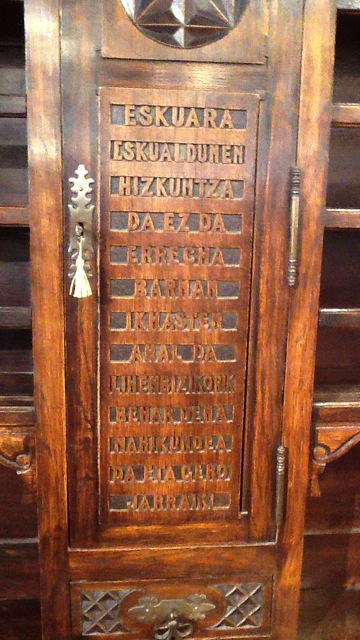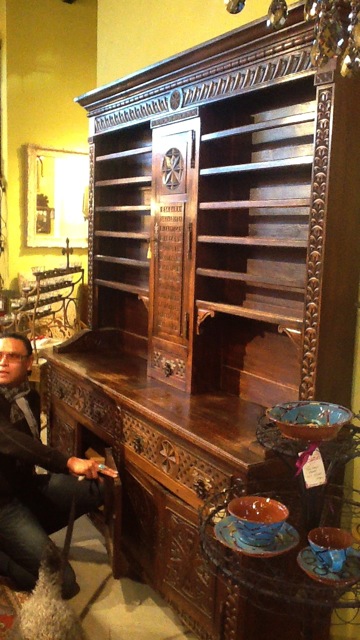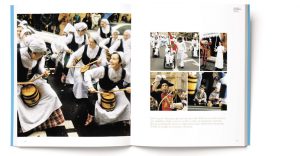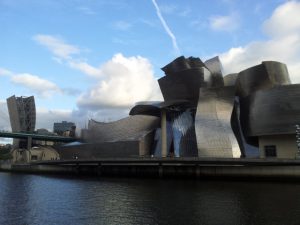 The now defunct Journal of Basque Studies in America was a journal published by Society of Basque Studies in America to promote Basque culture by publishing in English articles that would be of interest to a wider American audience. The goal was to essentially disseminate information about Basque culture that otherwise would not make it to an English speaking audience. That journal, which ended publication in 2011, was transferred to Boise State University and its Basque Studies Program.
The now defunct Journal of Basque Studies in America was a journal published by Society of Basque Studies in America to promote Basque culture by publishing in English articles that would be of interest to a wider American audience. The goal was to essentially disseminate information about Basque culture that otherwise would not make it to an English speaking audience. That journal, which ended publication in 2011, was transferred to Boise State University and its Basque Studies Program.
Fast forward to today and the journal has been reincarnated as BOGA: Basque Studies Consortium Journal. BOGA has the same basic aims as the Journal of Basque Studies in America, but with a bit more rigorous peer review. Those aims are nicely summarized on the BOGA website:
This journal aims to be a part of the long-standing tradition of Basque higher education as symbolized by the Basque Country’s first university built in Oñati, Gipuzkoa in 1548 (incorporated into our website theme). The town of Oñati also holds additional significance for Boise State University’s Basque Studies Program because it served as the first location for the studies abroad program in the Basque Country in the 1970s. This journal is a multi-disciplinary, peer-reviewed academic publication dedicated to the scholarly study of all aspects of Basque culture with the aspiration to foster a better understanding of Basque culture and heritage in its diverse aspects by disseminating original works of interest to an English speaking audience and to encourage interaction–learning links–among academics from various learning traditions; e.g., linguistic, philosophical, anthropological, ethnological, historic, literary, artistic, religious, economic, cultural, international relations, etc. The Basque sculptor Jorge Oteiza stated that to move forward, one had to look backward, and that is conceptualized by the rowboat image as the rowers make progress while looking behind. This journal hopes to contribute to the shared “rowing” effort among institutions and individuals to mutually support efforts in Basque Studies.
Many familiar names are associated with the journal, including: John Ysursa, William Douglass, Pedro Oiarzabal, Sam Zengotitabengoa, and Joseba Zulaika, among many more.
The inaugural issue is not online yet, but promises to have very interesting perspectives on a number of Basque topics, if the articles that appeared in the Journal of Basque Studies in America is any indication.
I’m personally very excited to see the launch of this new effort. There are a lot of aspects of Basque culture, history, and linguistics that simply are inaccessible to people who do not speak Basque or Spanish. This journal will provide a vehicle for at least some of those ideas and discoveries to reach an English audience.
Zorionak!





 The last few weekends, my family and I have been visiting consignment galleries, hoping to put an item up for sale. Usually, we simply hear that they aren’t interested and then we end up wandering the gallery for an hour, looking at all of the memories people are hoping to get a little bit of cash for, most of which don’t really pique our interest. Once in a while, we see something that would look pretty cool in our house, but doesn’t quite fit either our decor or our budget.
The last few weekends, my family and I have been visiting consignment galleries, hoping to put an item up for sale. Usually, we simply hear that they aren’t interested and then we end up wandering the gallery for an hour, looking at all of the memories people are hoping to get a little bit of cash for, most of which don’t really pique our interest. Once in a while, we see something that would look pretty cool in our house, but doesn’t quite fit either our decor or our budget.














